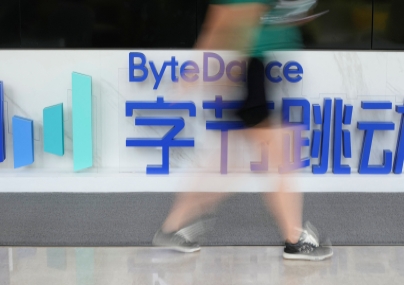
In recent times, China has called for more restrictions on financial leverage to gain better control on the direction of its financial health. However, the shadow banking sector remains a formidable force that provides funds to keep many sectors going strong. It remains an attractive option for companies, investors and households to secure loans and receive higher returns than bank deposits allow for.
Drafting tighter regulations and implementing legal frameworks could throw more light on shadow banks in the long run, but it’s not without some short-term risks and economic growth stunts. Chasing the shadows could prove to be a real catch-22 situation for the Chinese government.
“The credit extension in China’s economy has increased significantly in recent years. However, a significant part is not utilized by the real economy, but instead to create an asset bubble, which makes the economy vulnerable to any ‘black swan’ event. In order to reduce the risks accumulated within the economy, the Chinese government launched a de-leverage initiative, which starts from the real economy sector and now to the finance sector,” says Yang Tiecheng, partner at Clifford Chance.
“In addition to currency policies, from a legal and regulatory perspective, we have seen regulators become more conservative and rigid in terms of risk management and control.
Stricter credit risk monitoring and control inevitably makes it more difficult to obtain credit facility from financial institutions. Debt-to-equity swap can also be treated as an initiative to de-leverage,” he adds.
Some of the steps to rein in risks to China’s financial system include raising short-term interest rates, clamping down on leverage in the bond market, and curbing funding for property speculation.
Case in point is the January order from the People’s Bank of China (PBOC) for tighter regulations on loans, particularly mortgages, in an effort to bring down housing prices.
In the first quarter of this year, Chinese lenders only extended RMB4.22 trillion ($614 billion) in loans. This marks the first year-on-year decline for the nation since 2011, with a 8.5 percent decrease for the same period in 2016.
However, this move has sent debt- dependent borrowers to turn to shadow banks for meeting their capital needs.
Back to topTO THE DARK
Shadow banking is broadly defined as financial activities, usually lending, that are conducted by unregulated institutions or under unregulated conditions.
A study by capital research company Moody’s found that the size of the shadow banking industry has doubled in the last five years. Data showed that shadow banking assets grew by 9 percent in the first half of 2016 (19 percent annualised rate). The assets are valued at RMB58 trillion, equivalent to 82 percent of the nominal GDP.
According to George Xu, an analyst at Moody’s who monitors shadow banking in China, shadow banking serves to provide funds in areas where credit is hard to come by.
“Shadow banking has a role to play in meeting the financing needs of SMEs (small and medium-sized enterprises) and borrowers in sectors like the property market and industries that face overcapacity and have difficulty securing loans through the traditional banking channels, like steel and coal mining,” he explains.
Since November, data show a jump in shadow banking activities. Shadow credit — which consists of trust loans, entrusted loans and bank-acceptance bills — rose sharply to RMB479 billion ($69 billion), after having dropped to RMB55 billion ($8 billion) in October.
According to data from the PBOC, the most popular forms of shadow banking are entrusted loan agreements and trust loans.
In March, Guo Shuqing, newly appointed chairman of the China Banking Regulatory Commission (CBRC), announced that curbing funding for property speculation and clamping down on shadow lending would be a priority for his committee.
“In the last few years until late 2016, the Chinese government has done a good job of slowing down the rapid growth in core shadow banking components, such as trust loans, entrusted loans and undiscounted banker’s acceptance,“ Xu says.
“The recent tightening of regulations has had an unexpected see-saw effect on the shadow banking industry. The non-core components of shadow banking, such as banks’ outstanding wealth management products, show further signs of slowdown while growth of core shadow banking activity has accelerated to its fastest pace in two years,” he adds.
Chinese regulators have turned their attention to peer-to-peer lending schemes, wealth management products and the $2.6 trillion trust industry. All of which fall under the shadow banking category.
“Some debt reliant borrowers find it more difficult to procure financing, so they may choose to select alternative financing channels, which means higher financing costs. Peer-to-peer (P2P) lending platforms are quite ‘booming’ several years ago, but now this industry is heavily regulated. Regulators want the peer-to-peer platform to perform a pure information intermediary role,” Yang comments.
The case of Ezubao, a peer-to-peer lending scheme that milked $7.6 billion from nearly one million investors in a Ponzi scheme operation, is one of the most high profile and outrageous recent cases of shadow banking done wrong.
Ezubao claimed to be a peer-to-peer lender, matching investors with potential borrowers over the Internet. But a shocking 95 percent of advertised investment products offered by the online company were fake.
The case concluded with 26 prosecutions in August last year.
There remains an estimated 1,500 of such lending platforms in China.
Back to topWEALTH MANAGEMENT
Another big but controversial part of the shadow banking industry would be wealth management products.
“From a contractual point of view, many of these wealth management product contracts are probably rather solid and air tight in protecting the issuers’ interests. But that is no guarantee that the manners of selling these products are appropriate or that the risks of these products have been disclosed to the investors adequately. These defects trigger a fundamental fairness issue in respect to unsophisticated investors versus large banks,” says Rose Zhu, partner at Baker McKenzie.
Zhu is concerned that potential investors might be mislead when buying wealth management products from banks.
“Some investors, after induced by the bank location of the sales, might have bought these wealth management products with a false sense of security in thinking that these products are default- free, with implicit guarantees from the banks in the event of a default, when they are not,” she says.
“It would be very difficult for individual investors to recoup their investments through PRC courts as the court system is fragmented in terms of dealing with cases like these and the contracts signed may not prove favourable to individual investors. Even in cases of fraud, it can take a long time before the plaintiffs recover any of their investments,” she adds.
The Chinese government and state-owned banks are trying to distance themselves from being the guarantors in the event of such asset management products defaulting.
The government and banks are working on a draft that makes it clear to investors that there will be no bailouts by the government or banks.
“Regulating shadow banking has been on Chinese regulators’ priority list. Financing through various wealth management products, which may have a further complex structure behind the scene, is a common form of shadow banking in China. We note that regulators are preparing a unified regulation for asset management products that will be applicable to all financial sectors, which will be a key step to address shadow banking issues in China,” says Yang.
One of the rumoured rules include forcing financial institutions to put aside 10 percent of fees from wealth management as reserves for potential risk.
Another would be banning the investment of proceeds from wealth management products in non- standard credit assets (like loans and beneficiary rights linked to those assets) to avoid a default chain.
Zhu believes that this is a step in the right direction for the Chinese financial market. She believes that the judicial system surrounding the finance industry still has room to grow.
“It would certainly help to better define the roles, rules and regulations in order to create a better legal environment to support the financial system. Having a tighter regulatory system with preventative rules in place would also be useful in addressing issues associated with problematic products and in sweeping out inefficient companies that are becoming a burden on the economic ecosystem,” she says.
If the draft is passed, the new rules would be phased in as existing products mature.
Back to topCOMPLICATED CONNECTIONS
While shadow banks have a role to fulfill in meeting credit demand, they do pose a risk to Chinese financial stability, especially when China’s shadow banks become intertwined with commercial banks.
Commercial banks are increasingly buying into wealth management products from shadow banks. Wealth management products held as receivables now account for around RMB3 trillion ($500 billion) of interbank holdings.
As these products get resold to other shadow banks, they create a complicated network of cross- ownership that could lead to a disastrous crash. The existing web could take a while to unravel as drafts are being drawn.
Borrowing from money-market funds or derivative transactions with hedge funds by the commercial banks and the shadow banks could also lead to a crisis.
“The Chinese government is tightening regulations to curb banks’ incentives to engage in regulatory arbitrage in the shadow banking industry. But the shadow banking industry is very much connected with the commercial banking system, which amplifies the impact of any potential negative shock to the financial system. It would have a domino effect on the entire economy if it was removed completely,” Xu says.
“The shadow banking industry was born out of demand and has played a part in propping up the economy. But there remains a strong need for a legal framework to protect individual investors and to ensure a healthy and fair financial system,” says Zhu.
Back to top


